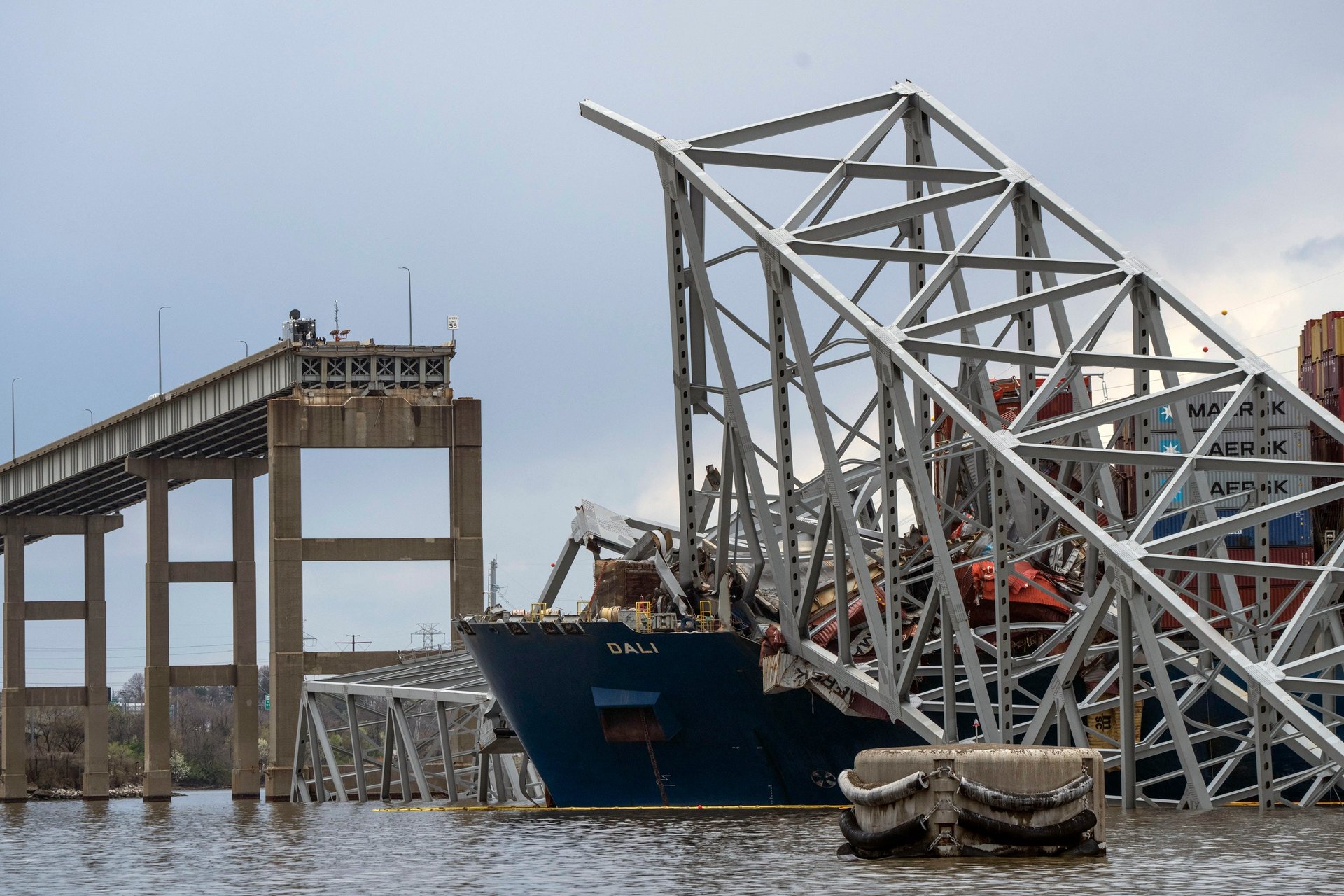Maryland lawmakers say coming bill will clarify that feds fully pay for replacing Baltimore bridge
Members of Maryland's congressional delegation say they'll soon introduce a bill that'll make clear the federal government will fully cover the cost of rebuilding the collapsed Francis Scott Key Bridge

WASHINGTON (AP) — Members of Maryland’s congressional delegation announced Tuesday they will soon introduce a bill that will make clear the federal government will fully cover the cost of rebuilding Baltimore's collapsed Francis Scott Key Bridge.
Suggested Reading
The federal government generally picks up 90% of the tab and the state 10% when replacing disaster-damaged interstate highways and bridges, but exceptions have occurred in similar emergency cases, said Sen. Ben Cardin, D-Md., after lawmakers attended a closed-door briefing on cleanup efforts. The legislation will also make clear that any money recovered from third parties will be used to reimburse federal taxpayers.
Related Content
“The fundamental issue right now is passing legislation to clarify that this is 100% a federal responsibility,” Cardin said.
Officials said it's unclear how much money will be required to replace the bridge, which collapsed last month after it was struck by a cargo ship. Some experts estimate recovery will take at least 18 months and cost $400 million. But Cardin said the final tab will depend upon the design of the bridge and the modern technologies included to accommodate far more barge traffic than was originally envisioned when the bridge was built in the 1970s.
Transportation Secretary Pete Buttigieg said the Biden administration expects that federal taxpayers will eventually be made whole for replacing the bridge, but that may take a while.
“Whatever insurance litigation and other related processes play out, we are not going to wait for them to play out to make sure these dollars are getting to where they need to be,” Buttigieg said. “And where they need to be is helping the people of Maryland rebuild right now.”
The bridge fell March 26 after it was hit by the cargo ship Dali, which lost power shortly after leaving Baltimore, bound for Sri Lanka. The ship issued a mayday alert with just enough time for police to stop traffic but not enough time to save a roadwork crew filling potholes on the bridge.
More than 50 salvage divers and 12 cranes are on site to help cut out sections of the bridge and remove them from the key waterway. Crews began removing containers from the deck over the weekend, and they’re making progress toward removing sections of the bridge that lie across the ship’s bow so it can eventually move, according to the Key Bridge Response Unified Command.
Lt. Gen. Scott A. Spellmon of the United States Army Corps of Engineers spoke to the congressional delegation and Maryland Gov. Wes Moore, a Democrat, on recovery efforts during a closed-door briefing at the Capitol. He said afterward there are 9,000 tons (8,165 metric tonnes) of steel and 3,000 tons (2,720 metric tonnes) of concrete at the bottom of the navigation channel leading into the Port of Baltimore.
“We are committed to getting this concrete and steel out of the channel by the end of May,” Spellmon said.
In the meantime, he said, officials are working to provide more access to the port. He said a limited access channel that is 280 feet (85 meters) wide and 35 feet (11 meters) deep will be completed this month, which will restore one-way access for most of the cargo coming into and out of Baltimore. He said captains will undergo training this week on using the channel.
Some House Republicans have said that additional funding for replacing the bridge should be offset with spending cuts elsewhere and that certain regulations such as the Endangered Species Act should be waived to avoid delays and cost increases. They also want the Biden administration to lift its pause on the approval of liquified natural gas export terminals before Congress considers approving funds for bridge reconstruction.
Maryland lawmakers say they hope the bridge replacement won't become mired in political disagreements.
“I just hope to remind all our colleagues that disaster can hit your state regardless of the political composition," said Sen. Chris Van Hollen, D-Md. “... And I recall when those disasters strike at this kind of scale, we've all come together as Americans to support our fellow Americans. I just hope that the overwhelming majority in the Senate and House will stick with that principle.”